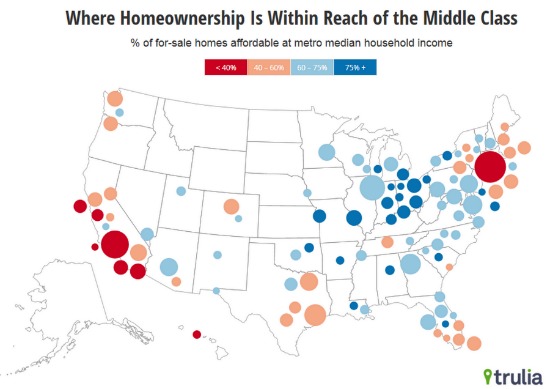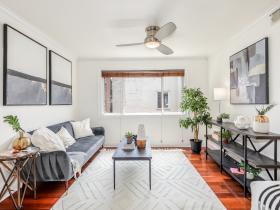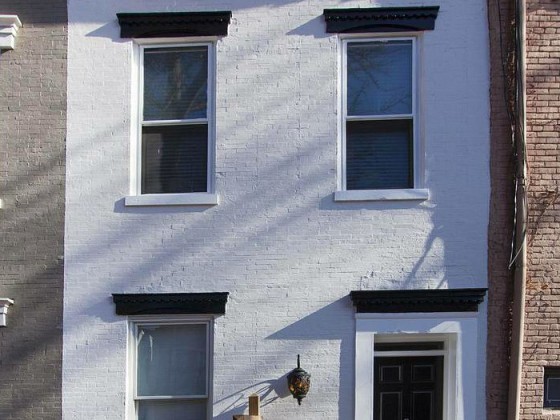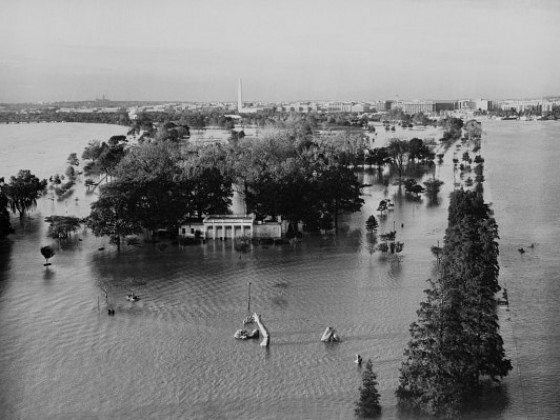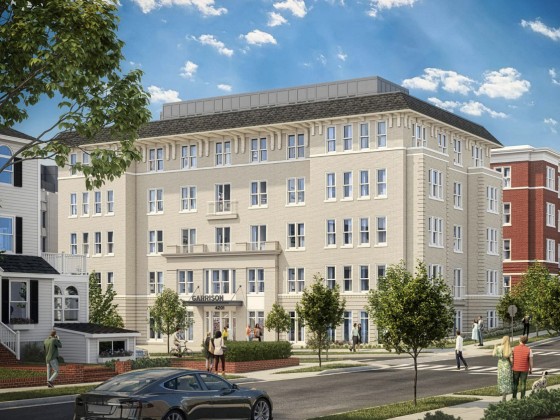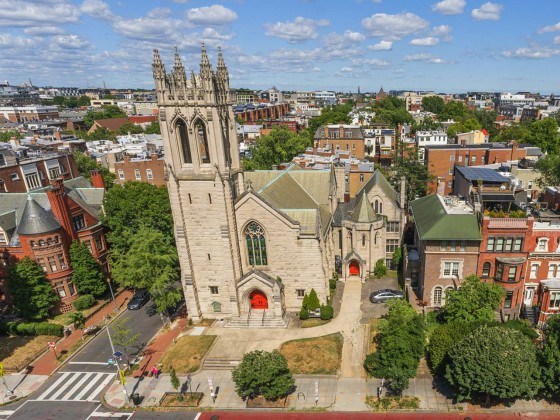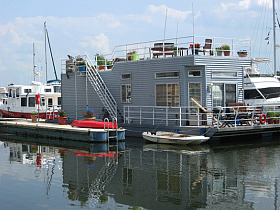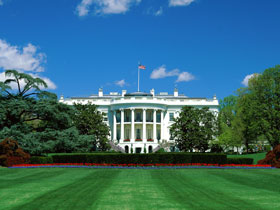What's Hot: Douglas Development Files PUD For Large Warehouse At New City Site Along New York Avenue
 Report: 45% of D.C. Homes are Affordable to Middle Class
Report: 45% of D.C. Homes are Affordable to Middle Class
✉️ Want to forward this article? Click here.
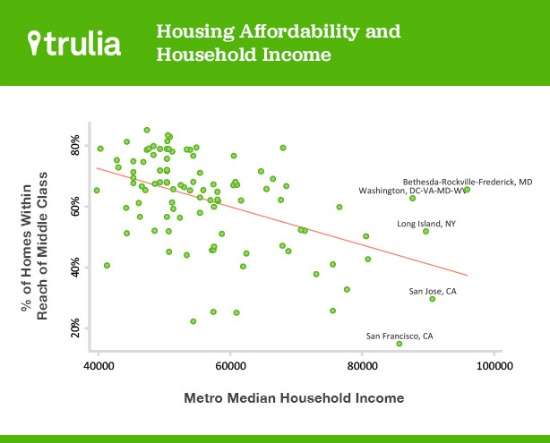
A study from Trulia that examined housing affordability nationwide found that in D.C. proper, about 45 percent of homes are considered affordable for the middle class, a relatively high number for a major metropolitan area.
For the study, Trulia measured affordability “as the share of homes for sale on Trulia within reach of a middle-class household.” They calculated whether the total monthly payment for a home would work out to less than 31 percent of a given metro’s area median income. For the DC region, the study used a median household income of $88,000 a year to determine regional affordability.
The study looked at the affordability of metropolitan areas as well as housing submarkets. It also dug down into housing affordability for millennials specifically using the metro median income for millennial-headed households. Nationwide, 49 percent of all homes are within reach to millennials. That number is 48 percent in the D.C. region, a large statistical area that includes a small part of West Virginia.
Markets in California and New York were by far the least affordable in the country for millennials or anyone else. (The study notes that even in San Francisco and New York, where the median income for millennials is higher than the median income for all households, the markets are still unaffordable for that demographic.) Submarkets that topped the unaffordability list were unsurprisingly concentrated in San Francisco, Los Angeles and New York City: Manhattan, Pasadena/San Gabriel Valley, Brooklyn and San Francisco sat at the top.
One paradox the study noted was that the higher median incomes rose in metros, the less affordable they became:
“Surprisingly, high-income metros are generally less, not more, affordable. Housing prices tend to be so high in metros with high incomes that affordability ends up being worse than in low-income metros. Why? High-income households bid up home prices, and high prices push out lower-income households. In addition, higher-income metros tend to have less new construction than lower-income metros do. As a result, high-income metros such as San Francisco and San Jose are among the least affordable, even after taking income into account.
Bucking the trend are Washington, DC and the Bethesda metro next door, where incomes are high and more than 60% of homes are within reach of the middle class.”
While that last sentence might surprise some in the region, it is important to remember that it corresponds to the D.C. metro area as a whole — a very large statistical area — not to D.C. proper.
But Trulia provided UrbanTurf with specific affordability data from D.C.-area submarkets. Unsurprisingly, Fairfax and Loudoun were least affordable for middle class residents, with D.C., Alexandria and Arlington close behind:
Fairfax, VA: 38%
Loudoun, VA: 38%
Arlington and Alexandria, VA: 40%
District of Columbia: 45%
Montgomery, MD: 59%
Prince William, VA: 69%
Prince George’s, MD: 86%
See other articles related to: affordability, trulia
This article originally published at https://dc.urbanturf.com/articles/blog/trulia_affordability_study_about_45_of_d.c._homes_are_affordable_to_middle_/9233.
Most Popular... This Week • Last 30 Days • Ever

When you buy a home in the District, you will have to pay property taxes along with y... read »
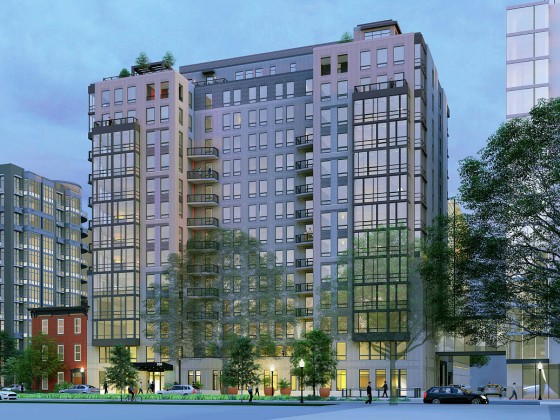
The largest condominium building in downtown DC in recent memory is currently under c... read »
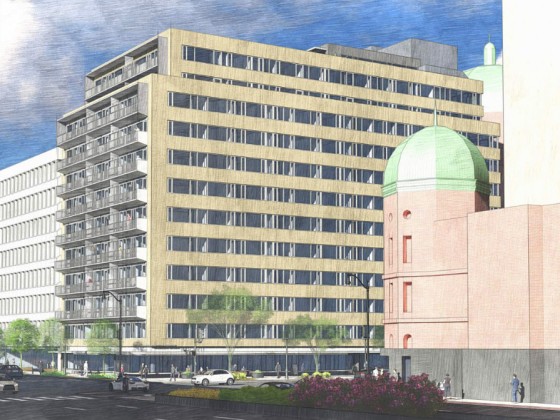
The plan to convert a Dupont Circle office building into a residential development ap... read »
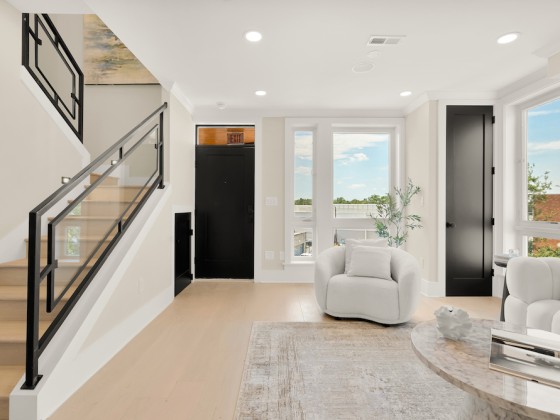
The Rivière includes just 20 homes located on the eastern banks of the Anacostia Riv... read »
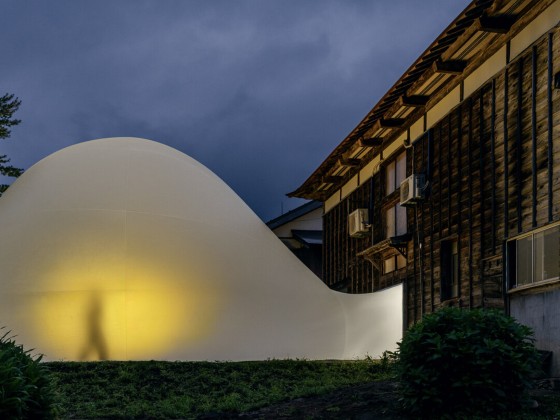
Why Tyra Banks is serving ice cream in DC; a bike shop/record store opens in Adams Mo... read »
DC Real Estate Guides
Short guides to navigating the DC-area real estate market
We've collected all our helpful guides for buying, selling and renting in and around Washington, DC in one place. Start browsing below!
First-Timer Primers
Intro guides for first-time home buyers
Unique Spaces
Awesome and unusual real estate from across the DC Metro
